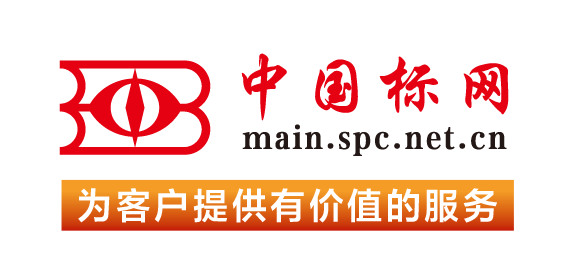This specification covers hot- and cold-finished bars of stainless steel, including rounds, squares, and hexagons, and hot-rolled or extruded shapes such as angles, tees, and channels for use in boiler and pressure vessel construction. Four grades of the stainless steel are available which includes austenitic, austenitic-ferritic, ferritic, and martensitic grades. Mechanical properties such as tensile strength, yield strength, elongation, and hardness shall be determined for the specimens subjected to normalized, tempered, annealed, and quenched conditions. The austenitic stainless steels shall be subjected to heat treatment and shall undergo corrosion test.1.1 This specification2 covers hot- and cold-finished bars of stainless steel, including rounds, squares, and hexagons, and hot-rolled or extruded shapes such as angles, tees, and channels for use in boiler and pressure vessel construction.2NOTE 1: There are standards covering high nickel, chromium, austenitic corrosion, and heat-resisting alloy materials. These standards are under the jurisdiction of ASTM Subcommittee B02.07 and may be found in Annual Book of ASTM Standards, Vol 02.04.1.2 The values stated in either SI units or inch-pound units are to be regarded separately as standard. The values stated in each system may not be exact equivalents; therefore, each system shall be used independently of the other. Combining values from the two systems may result in non-conformance with the standard.1.3 Unless the order specifies the applicable “M” specification designation, the material shall be furnished to the inch-pound units.1.4 This international standard was developed in accordance with internationally recognized principles on standardization established in the Decision on Principles for the Development of International Standards, Guides and Recommendations issued by the World Trade Organization Technical Barriers to Trade (TBT) Committee.
定价: 590元 加购物车
This specification covers general requirements for flat-rolled stainless and heat-resisting steel plate, sheet, and strip. The steel shall be made by one of the following processes: electric-arc, electric-induction, or other suitable processes. Heat and product analyses shall conform to the chemical requirements for each of the specific elements. The material shall undergo mechanical tests such as tension test, hardness test, and bend test. Special tests like intergranular corrosion test, permeability test, Charpy impact testing and tests for detrimental intermetallic phases in wrought duplex stainless steels shall be also be performed when required.1.1 This specification2 covers a group of general requirements that, unless otherwise specified in the purchase order or in an individual specification, shall apply to rolled steel plate, sheet, and strip, under each of the following specifications issued by ASTM: Specifications A240/A240M, A263, A264, A265, A666, A693, A793, and A895.1.2 In the case of conflict between a requirement of a product specification and a requirement of this specification, the product specification shall prevail. In the case of conflict between a requirement of the product specification or a requirement of this specification and a more stringent requirement of the purchase order, the purchase order shall prevail. The purchase order requirements shall not take precedence if they, in any way, violate the requirements of the product specification or this specification; for example, by waiving a test requirement or by making a test requirement less stringent.1.3 The values stated in either SI units or inch-pound units are to be regarded separately as standard. The SI units are shown in brackets, except that when A480M is specified, Annex A3 shall apply for the dimensional tolerances and not the bracketed SI values in Annex A2. The values stated in each system are not necessarily exact equivalents; therefore, to ensure conformance with the standard, each system shall be used independently of the other, and values from the two systems shall not be combined.1.4 This specification and the applicable material specifications are expressed in both inch-pound and SI units. However, unless the order specifies the applicable “M” specification designation [SI units], the material shall be furnished in inch-pound units.1.5 This international standard was developed in accordance with internationally recognized principles on standardization established in the Decision on Principles for the Development of International Standards, Guides and Recommendations issued by the World Trade Organization Technical Barriers to Trade (TBT) Committee.
定价: 843元 加购物车
This specification covers nickel, nickel-copper, nickel-copper-silicon, nickel-molybdenum, nickel-chromium, and nickel-molybdenum-chromium alloy castings for corrosion resistant service. The castings shall be heat treated. When Class 1 is specified, grades CY40 and M25S shall be supplied in the as-cast condition. When Class 2 is specified, grades CY40 and M25S shall be supplied in the solution treated condition. When Class 3 is specified, grade M25S shall be supplied in the age-hardened condition. The chemical composition requirements of the alloys are presented. The tensile property requirements including the heat treatment procedure for the castings are presented in detail. It is required that one tension test shall be made from each master heat except for grades M25S and CY5SnBiM when the master heat is used to pour the castings. One tension test shall be made from each melt except for grades M25S and CY5SnBiM. Test results shall conform to the specified tensile requirements.1.1 This specification covers nickel, nickel-copper, nickel-copper-silicon, nickel-molybdenum, nickel-chromium, and nickel-molybdenum-chromium alloy castings for corrosion-resistant service.1.2 The values stated in either SI units or inch-pound units are to be regarded separately as standard. The values stated in each system may not be exact equivalents; therefore, each system shall be used independently of the other. Combining values from the two systems may result in nonconformance with the standard.1.3 This international standard was developed in accordance with internationally recognized principles on standardization established in the Decision on Principles for the Development of International Standards, Guides and Recommendations issued by the World Trade Organization Technical Barriers to Trade (TBT) Committee.
定价: 590元 加购物车
 我的标准
我的标准 购物车
购物车 400-168-0010
400-168-0010











 对不起,暂未有相关搜索结果!
对不起,暂未有相关搜索结果!













